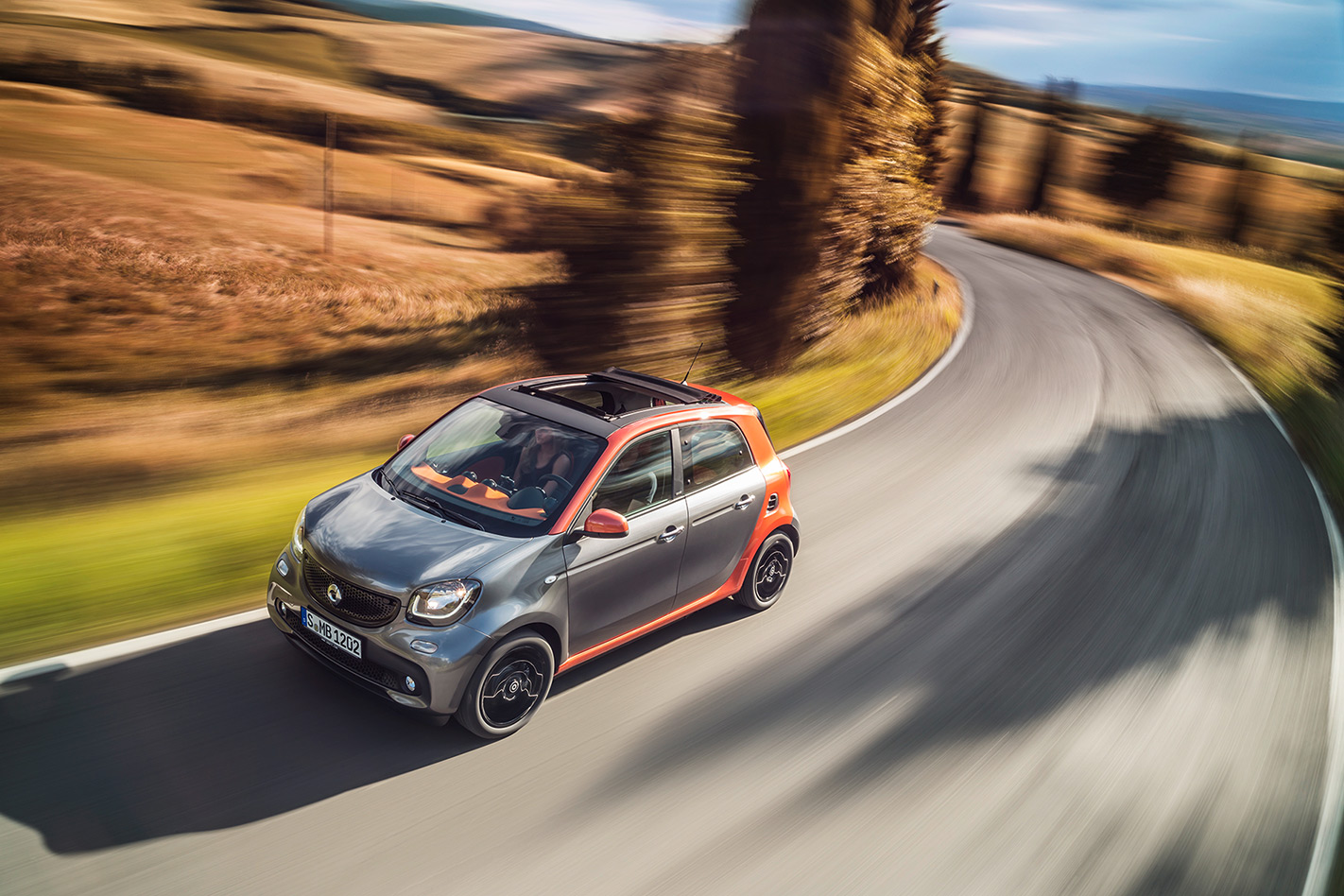SMART’S next-generation city car faces a tough uphill battle to make it to Australia, the company behind the quirky concept admits.
With its innovative rear-engine and rear-drive architecture, high levels of safety technology, upbeat, high-class cabin fit-out and super versatile interior design, Smart’s new ForFour is the most intriguing city car to come along in years.
But a big question mark still hangs over whether the bigger brother to the ForTwo will come to Australia, with a local launch of even the two-seat version still about 18 months away.
Smart spent big money on the international reveal of its new ForTwo and ForFour in Berlin on Wednesday evening, flying in about 500 journalists from around the world for an elaborately staged presentation.
But the closely related two- and four-seat models may fail to add up in the case of Australia.
“The decision [to market the cars in Australia] is not made,” admits Smart spokesman David McCarthy. “We’re fighting for it.”
With sales limited to the existing ForTwo coupe and cabriolet, the Smart brand has struggled in Australia.
The Daimler-owned city-car specialist has sold only 3425 cars here in the last 12 years, and in the first half of this year, Australians bought only 38 ForTwos via the brand’s online salesroom.
Sales have not rebounded despite Smart reducing the price of the current ForTwo to $18,990 drive-away and trialling the virtual showroom – a model it hinted could one day extend to Mercedes-Benz products.
Before it dropped out of the Australian landscape in 2006, the Netherlands-made Smart ForFour range was priced from $23,900 for the entry-level model powered by a 1.3-litre four-cylinder engine, up to $39,900 for the borderline bonkers Brabus edition using a forced-induction 1.5-litre four-pot.
“It’s the pricing, for us, that is the challenge,” McCarthy says.
“The new ForFour, the first four-seat Smart since 2006, (and) has greater sales potential in Australia than the ForTwo.
“The market for that car is so much bigger,” he adds. “I think the ForFour would easily do 500 [sales] a year, if the price is right.”
Obviously, the ForFour is different from the budget-priced micro-cars Australia is used to.
But it must, McCarthy argues, make a persuasive value case against similar-size cars that lack the Smart’s engineering and design pedigree.
Many of these come from low-tariff countries, giving them an extra price advantage over the made-in-Europe Smart.
The ForFour also needs to be highly equipped to convince potential customers to pay more, McCarthy says.
“We do not intend to sell a bare-bones car; this is a product of (Mercedes-Benz parent company) Daimler.”
It will be a small tragedy if the business case cannot be made to add up for the ForFour, and closely related ForTwo, in Australia.
They’d bring a flash of unorthodox colour to an automotive landscape that’s mostly drab and conventional.
Ultimately, it’s the outcome of talks with Germany over pricing that will determine Smart’s future in Australia. Expect to learn the outcome late this year.
Volkswagen experimented with a premium compact city runabout in Australia, launching the tiny, feature-rich $13,990 Up in 2012.
However, the compact VW has been left languishing as buyers chase larger, less-premium city cars, with only the Chinese-made Chery J1 attracting fewer sales in the first six months of this year.






